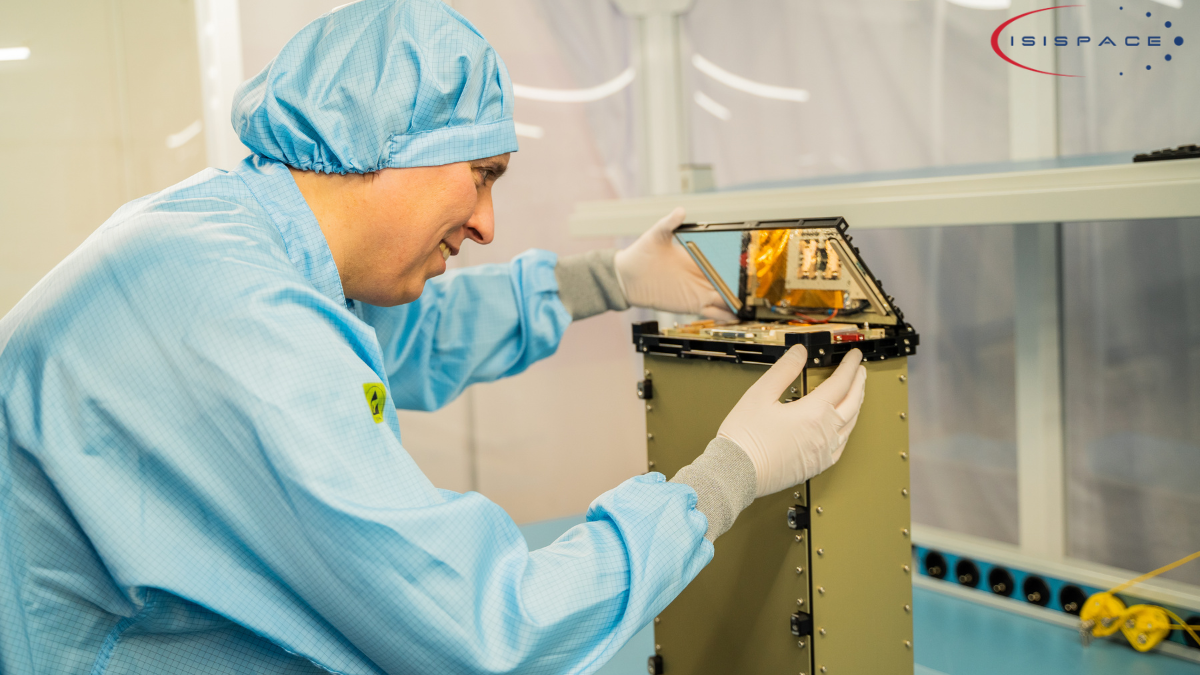Lucy, DART, Hera mission – a lot is happening around. Imagine a future where tiny spacecraft journey through the cosmos, exploring asteroids, mapping distant moons, and celestial bodies. These missions could also defend Earth from potential threats, powered by innovative technologies, pushing the limits of what’s possible in space. People on Earth can greatly benefit from all the information flying and hidden in space and can create a strategic defensive plan.
This isn’t science fiction; it’s the dawning new reality of space exploration and planetary protection. As ESA’s Hera mission ventures boldly into the cosmos, we stand on the cusp of a new era where deep space missions with deep space deployers (DSD) are coming within reach of small satellites such as CubeSats.
At the heart of the innovative transformation in low-earth orbit (LEO) are CubeSats, miniature satellites that pack a powerful punch when it comes to innovation. These satellites with our DSD are ready to usher in the era of New Space.
How do you bring CubeSats into the study of (deep) space mysteries?
The secret to their successful deployment far beyond Earth’s orbit lies in advanced technologies like the Deep Space Deployer (DSD) from ISISPACE. This cutting-edge deployment system is redefining how we can explore our solar system with CubeSats as co-passengers on larger missions, allowing us to go further, gather more information, and protect our planet like never before.
Because we do not want to go the way of the dinosaurs.
So, how exactly does the DSD help CubeSats break free from ESA’s Hera’s grasp and explore the little-known surface of Dimorphos? First, we will have to learn more about these asteroids – Didymos and Dimorphos and the innovative solutions that the experts have provided to make it a success.
Let’s start the mission of knowing.
DART and Hera Mission – A Planetary Defence Partnership
The European Space Agency’s (ESA) Hera mission represents a noteworthy leap in Earth’s planetary defence strategies, following the footsteps of NASA’s DART (Double Asteroid Redirection Test) mission.
The DART mission made headlines on 26 September 2022 by deliberately crashing into the smaller asteroid – Didymorphos of the binary system – Didymos and Dimorphos. Now, Hera is taking it a step further. Scheduled for launch in October 2024, Hera mission aims to conduct an in-depth investigation of the Didymos binary asteroid system to assess the effectiveness of kinetic impact as a planetary defence technique.
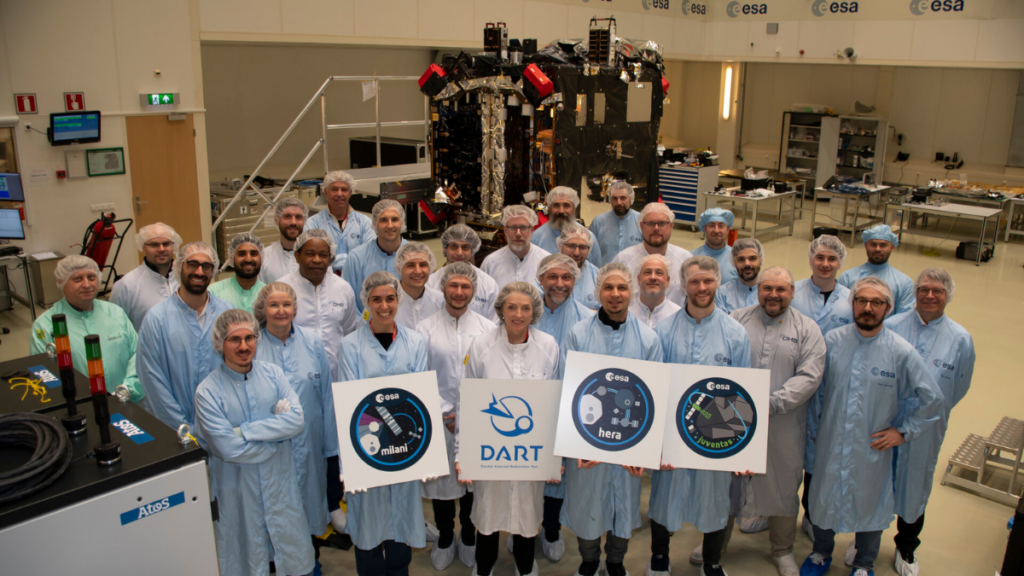
The Hera satellite will house two CubeSats – Milani and Juventas, encapsuled in ISISPACE’s DSD. These CubeSats will carry advanced scientific instruments that will provide detailed imaging and collective data regarding:
- Characteristics of the dust clouds
- Volatiles such as water
- Light organic materials
- Geophysical characteristics such as the porosity of Didymorphos
- Internal structure of Didymorphos and more
These nanosatellites will enhance our understanding of the aftermath of DART’s impact and the characteristics of the asteroids, aiding in the development of more effective planetary defence strategies for the future.
Understanding Didymos and Dimorphos
Didymos and its smaller moonlet Dimorphos are of particular interest in planetary defence research. Located approximately 11 million kilometres away from Earth, the Didymos system represents a class of binary asteroids that are most likely to cross Earth’s orbit in the future. Didymos measures roughly 780 metres in diameter, while Dimorphos, the primary target of the DART mission, is about 160 metres across.
So, why NASA and ESA chose them? Because they are really special!
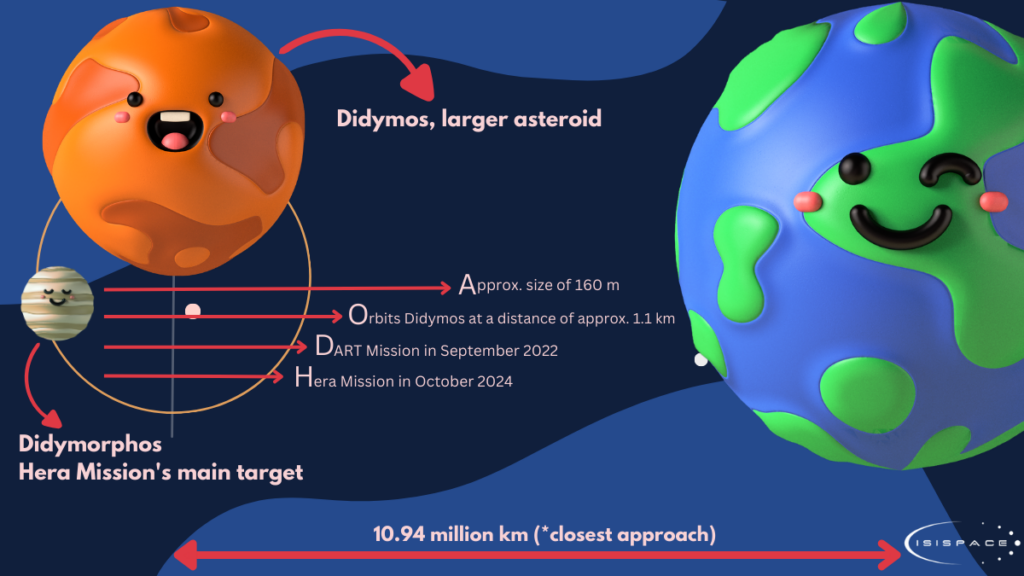
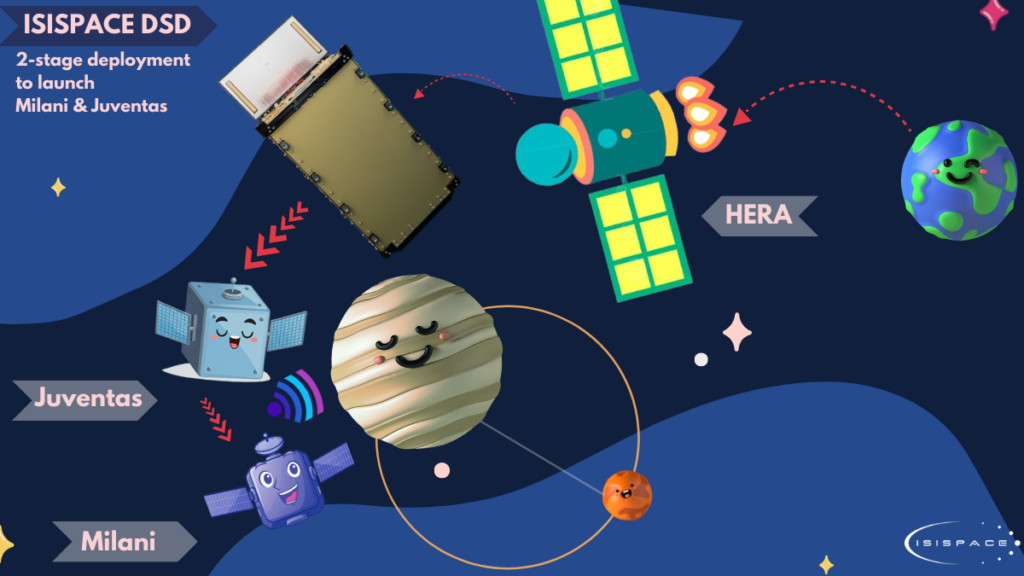
Here’s how Didiymos and Didymorphos, a binary asteroid system is special to us:
- Accessibility: The mission’s convenient and observable target is the Didymos system, which is well-studied and reasonably close to Earth.
- Binary Nature: The system’s dual structure, consisting of a tiny moonlet (Dimorphos) and a larger asteroid (Didymos), provided a rare chance to test the kinetic impact technique on a smaller body without posing a danger or threat to Earth.
- Observability: Dimorphos’ orbit can be precisely measured both before and after the hit because of the binary system’s orbital structure, which offers important information on how well the kinetic impact method affects an asteroid’s trajectory.
- Safety: Despite its proximity to Earth, the Didymos system does not directly threaten our world, making this mission more exciting and feasible.
Understanding these celestial bodies’ physical and chemical properties is critical to designing effective strategies to mitigate potential asteroid impacts. And the experts of ESA, NASA and ISISPACE have worked together to make the best out of the Hera mission.
ISISPACE DSD Enhancing Future Deep Space Missions
A cornerstone of the Hera mission is the deployment of CubeSat co-passengers into the deep space environment. This is more difficult than it sounds because of the nature of the deep space environment. The low gravitational pull of the asteroid and distance from Earth during the mission execution are among the other factors that drive this unique venture.
This is where the ISISPACE Deep Space Deployer becomes essential. The DSD is an innovative CubeSat deployment system, specifically designed to handle the complexities of deep space. Unlike conventional deployers, which are optimised for short-duration missions in Low Earth Orbit or LEO, the DSD is engineered to ensure that CubeSats can be safely and precisely released into deep space environments like the Didymos system.
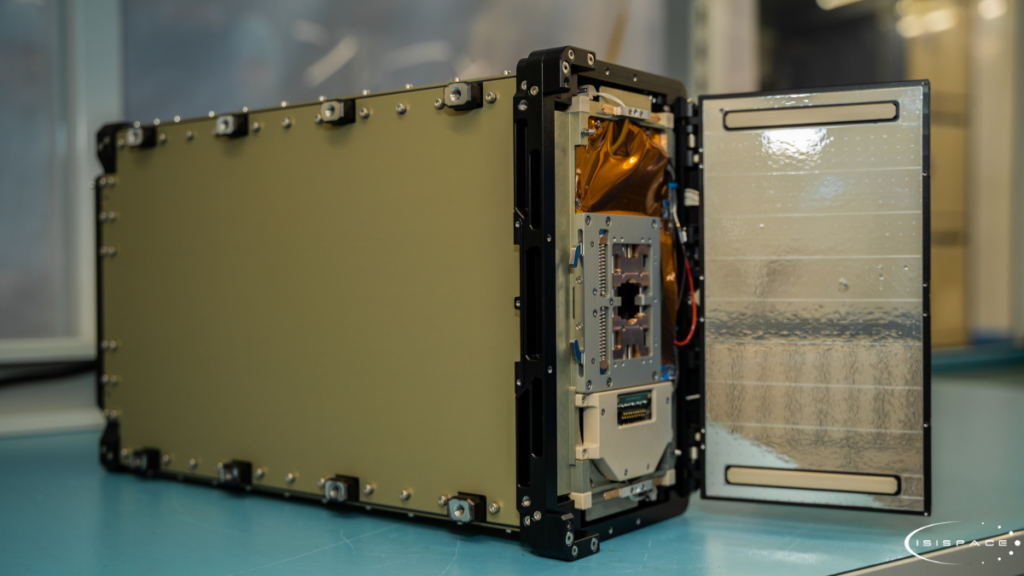
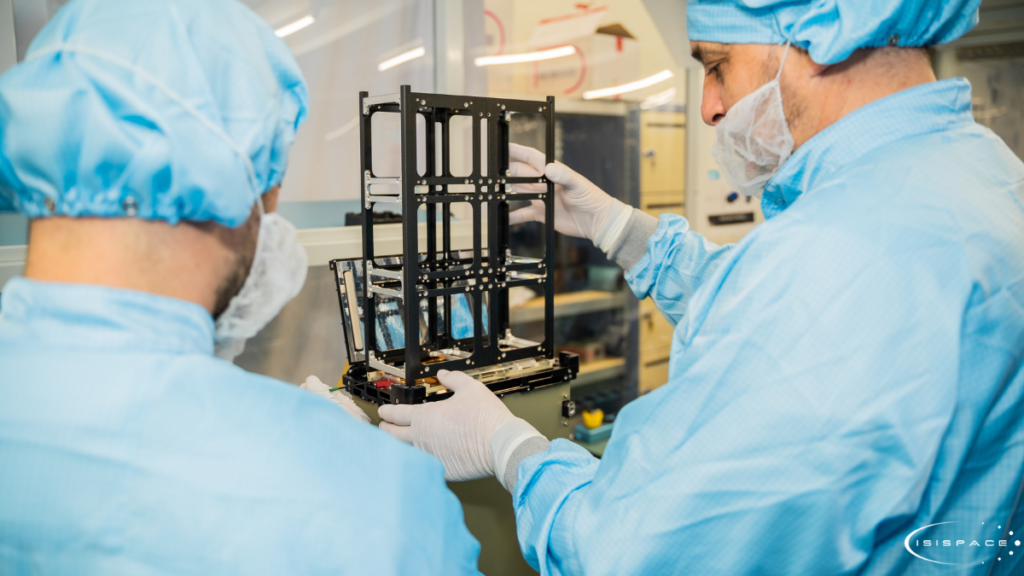
Cutting-Edge Design of Deep Space Deployer
The DSD is a cutting-edge safety box and deployment system of 4.9 Kg (approx.), designed to protect, power, and communicate with CubeSat payloads, stowed as a co-passenger during long-duration space missions beyond low earth orbit. For the Hera mission, these are the Milani and Juventas CubeSats. Its key features include:
- Protective Environment: ISISPACE’s DSD provides a shielded environment for the nanosatellites, protecting them from external factors like radiation and temperature fluctuations.
- Power and Data Connectivity: The DSD offers power and data capabilities, allowing for monitoring, charging, and communication with the CubeSat while it’s stowed.
- Deployment Mechanisms: It features a door mechanism and a CubeSat Release System (CRS) to deploy the CubeSat from its stowed configuration to a deployed one.
- Umbilical Connection: An umbilical connection ensures smooth communication and power supply between the DSD and the CubeSat, even in the deployed configuration.
- Customization: The DSD can be customized to meet mission-specific requirements, including adding a Life Support Interface Board (LSIB, a connection between Hera and each of the two CubeSats) box for electrical protection.
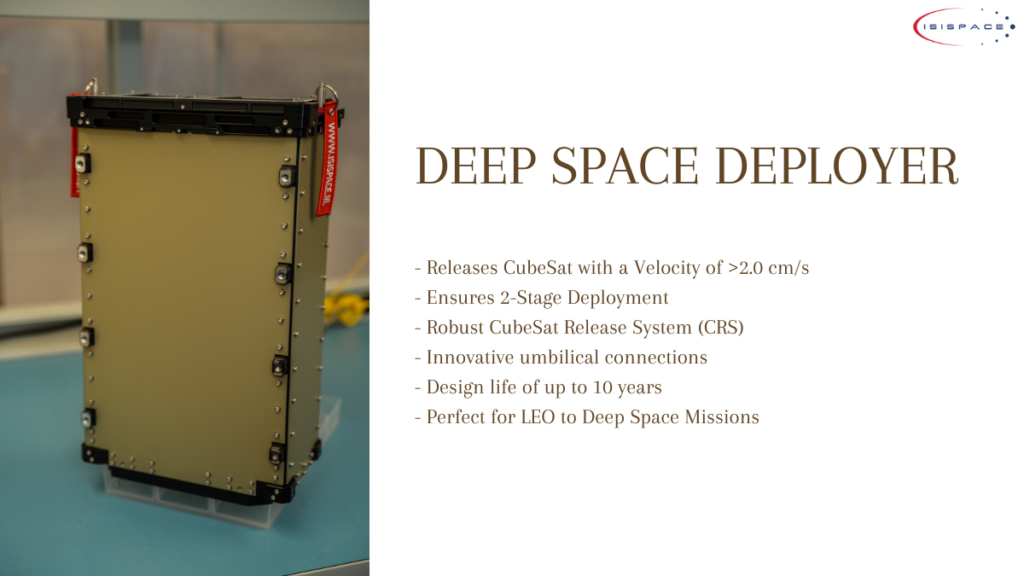
Our Deep Space Deployer: Shielding The CubeSats
Our innovative DSD shields the host platform from the CubeSat payload, providing a shielded environment during the transit of the CubeSats. Only when the host platform activates the DSD, the CubeSat will go from the stowed configuration to a deployed configuration. This will be done without being detached from DSD and connected through the CubeSat Release System (CRS). In this configuration, the CubeSat platform can be booted up and checked out before being released from the host platform. Upon sending the commands to the CRS on the DSD, the CubeSat can then be released with a velocity of >2.0 cm/s, allowing for proximity operations of the CubeSat and host platform, compared to the typical LEO deployments, where the average release velocity is ~100 cm/s.
The DSD’s versatility and reliability make it an ideal choice for a wide range of space missions, from LEO to lunar and beyond. ISISPACE can customize the DSD for future space missions as per the requirements, providing a reliable and efficient solution for deep space CubeSat deployment.
Talk to our experts and learn more about our innovative solutions.
Why Does Staged Deployment Matter for the Success of CubeSats in Deep Space?
One of the key challenges of deploying CubeSats in deep space is TIMING.
Unlike in Earth orbit, where satellites can be deployed relatively close to each other, in deep space, there is a need for a more precise, staged deployment. This will ensure that the CubeSats are positioned correctly to carry out their intended functions.
ISISPACE Deep Space Deployer allows for such staged deployment, enabling mission operators to control when and where each CubeSat is released. The staged deployment is also important to create an Intersatellite Link (ISL) for the Hera mission in particular. By taking advantage of the Cubesats’ proximity to the binary, the ISL provides an essential complement to gravity estimation of low-gravity bodies. This is because the system dynamics, such as the masses and gravity fields of Didymos primary and secondary, are determined by the ISL’s range-rate measurements.
This staggered approach also allows ground control teams to analyse initial data and adjust mission parameters accordingly.
“Once Hera reaches the Didymos system, the CubeSats will be ready to be inserted into orbit around the asteroids. However, Didymos’s gravity is estimated to be about 40,000 times weaker than Earth’s, while Dimorphos’s gravity is approximately 200,000 times weaker. For the CubeSats to be ‘caught’ in the gravitational pull of these asteroids, they need to be released at a velocity lower than 5 cm/s. The DSD is designed in such a way that the release velocity is 3 cm/s.”
— Ralph Slootweg, Lead Mechanical Design Engineer at ISISPACE
How Does the DSD’s Umbilical Connection Keep CubeSats Mission-Ready?
The DSD CubeSat dispenser typically has three electrical connections:
- The first connection is the umbilical connection to the CubeSat payload. This allows health monitoring and charging functions during transit. This transit is expected to take around 24 months, much longer for a CubeSat to be stowed in a deployer than during a LEO mission.
- The second connection activates the door of the DSD enclosure. This allows the CubeSat to move from a stowed configuration to a deployed configuration, in which the CubeSat is still attached to the DSD through the CubeSat Release System (CRS). In this deployed configuration, there is still an electrical connection via the umbilical.
- The third electrical connection controls the separation of the umbilical connection through the Umbilical Disconnect System (UDS) and the CubeSat Release System (CRS). These systems manage the separation of the CubeSat from the host platform.
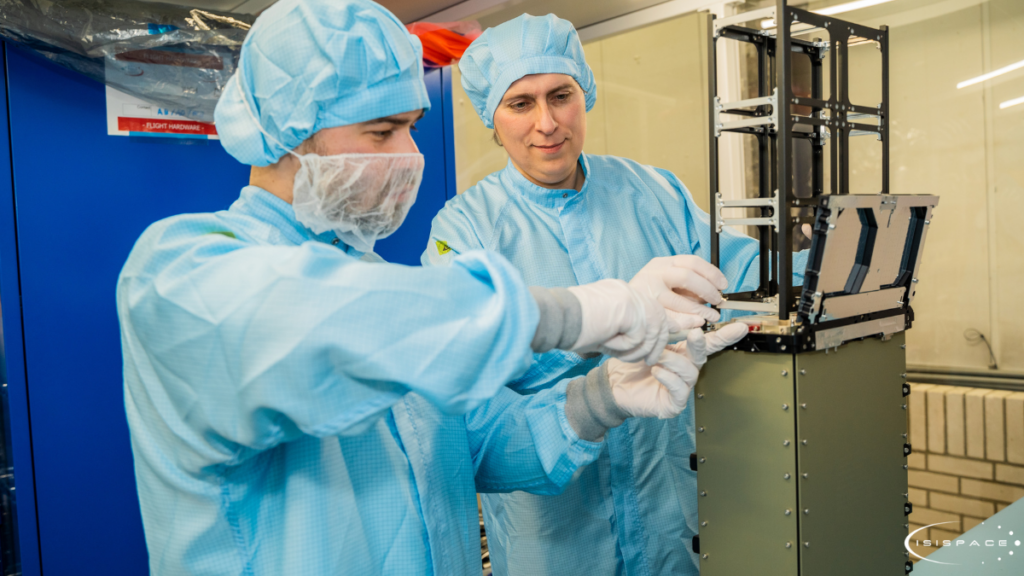
Mission-specific requirements may necessitate that the umbilical connection to the CubeSat pass through a separate electronics box called the “LSIB.” It provides electrical protection to the host platform. This box is part of the DSD. It is located on the opposite side of the release direction of the CubeSat. It can accommodate a mission-specific number of connections.
Tatsuo Shimizu, designer of LSIB at Finland’s Kuva Space explains, “The LSIB converts signals and power voltage between the two sides, and also performs isolation in the event of any CubeSat failure. Essentially, all of Hera’s interaction with the CubeSats in their DSDs takes place via the LSIBs.”
DSD’s Robust Umbilical Connection
The umbilical connection ensures that CubeSats remain mission-ready up until the moment of deployment. This connection provides power and data interfaces to the CubeSats. This allows them to stay charged and maintain communication with the main spacecraft/host. The umbilical connection ensures that critical systems remain operational, even after months or years in transit through deep space.
Moreover, the umbilical interface allows for last-minute software updates or parameter adjustments, enhancing mission flexibility and reducing risks. This real-time adaptability is particularly crucial in deep space missions where communication delays can make it difficult to respond quickly to unforeseen circumstances.
“The mechanisms aboard the ISISPACE DSD have a design life of up to 10 years, allowing it to reach numerous mission destinations beyond Low Earth Orbit (LEO). Whether deploying in Geostationary Earth Orbit (GEO) for lunar missions or venturing beyond the Earth-Moon system to explore asteroids and other planets, the DSD is designed to meet the demands of ambitious deep space missions.”
— Geanne Lebbink, System AIT Engineer at ISISPACE
Final Steps of The DSD’s Deployment Process in Hera Mission
Now the main question – How will our DSD guarantee your CubeSat is Ready for Action?
The DSD is built to withstand the mechanical stresses of launch and deep space environments, ensuring that CubeSats are not damaged during transport. It is equipped with thermal protection systems that help maintain a stable internal environment, protecting sensitive electronics from extreme temperatures.
The DSD uses precision springs and dampers to release CubeSats smoothly and with minimal risk of collision or damage.
Here is the stepwise deployment procedure:
- DSD opens doors and the satellites will be deployed to the edge of the DSD where they will get locked and stay attached to the host platform.
- Umbilical performs final health and RF checks of CubeSat and establishes the Inter-satellite link. If something is not fine (e.g. software issue), a patch can be sent to the flight software.
- Umbilical Disconnect System (UDS) disconnects the umbilical.
- CubeSat Release System (CRS) disconnects the CubeSat from the DSD deployment system.
- CubeSats released at 3 cm/s from the host platform.
Jeroen Rotteveel, the CEO of ISISPACE confirms, “Our deep space deployer is ideal for carrying CubeSat co-passengers on deep-space missions and for lunar exploration missions. Since the Netherlands signed the Artemis Accords in 2023, we expect the DSD to be available to all countries that are signatories to the Artemis Accords. The list includes the United States, India, the United Kingdom, Japan, South Korea, UAE and more. This way, small co-passenger spacecraft can safely be accommodated into larger spacecraft and probes, fostering new ideas and concepts beyond the confines of the original habitat of the CubeSat, low-earth-orbit.”
ISISPACE is excited to support ESA in Hera mission that will launch in the fall of 2024. We hope to achieve significant discoveries that will benefit humankind.
Do you need help with your Space project? Call us and know how we can help you.
Pioneering the Future of Deep Space Exploration
ISISPACE aims to have a Dutch press event on the 24th of September with the Netherlands Space Office, ESA, and Cosine, discussing briefly on Hera mission and the contributing parties. Following this, we will attend the International Astronautical Congress (IAC) in Milan in mid-October. Our objective at the IAC is to showcase our latest advancements, foster international partnerships, and explore new opportunities for collaboration in the space industry.
“Our Deep Space Deployer (DSD) acts as a crucial risk shield for small payloads aboard larger spacecraft. By integrating canisterised co-passenger payloads, whether attached or free-flying CubeSats, our DSD system enables the inclusion of technically and programmatically ambitious experiments on deep space missions. The DSD allows for experimental payloads to be baseline-tested or ejected without significantly impacting the primary mission, effectively isolating these riskier components from the main spacecraft.In an era where rapid innovation is essential for Europe’s competitiveness, our DSD system provides a vital interface that mitigates risks associated with untested technologies, while still enabling the integration of groundbreaking innovations into space missions. This approach not only advances technological progress but also benefits the overall space exploration community.”
— Jeroen Rotteveel, CEO of ISISPACE

